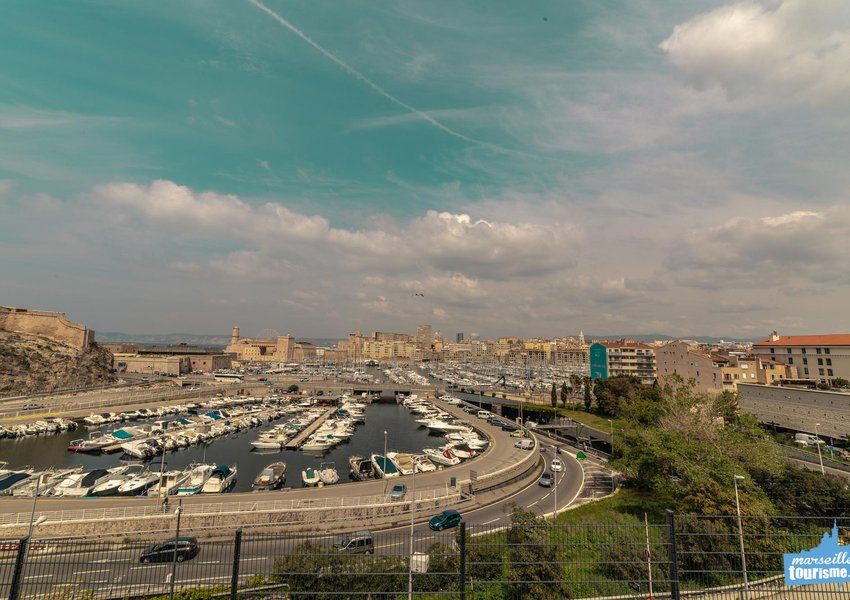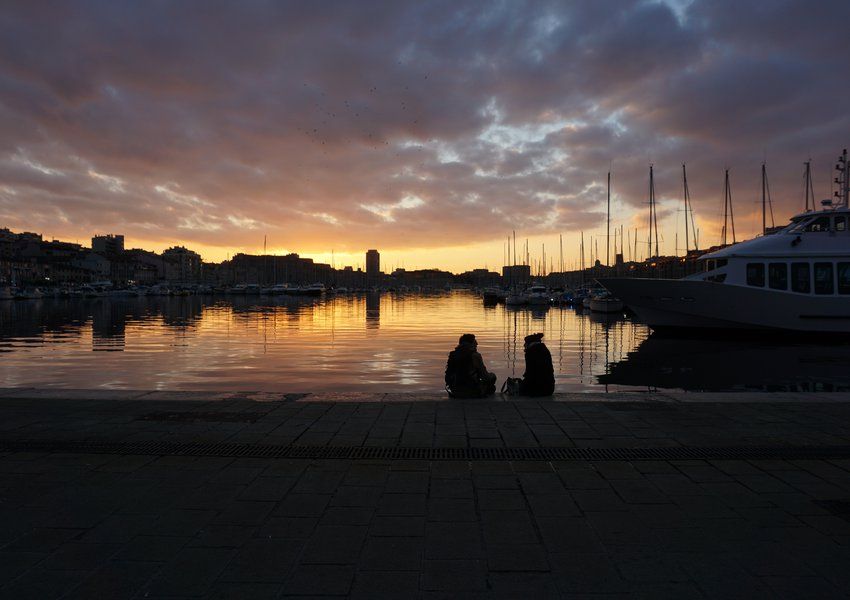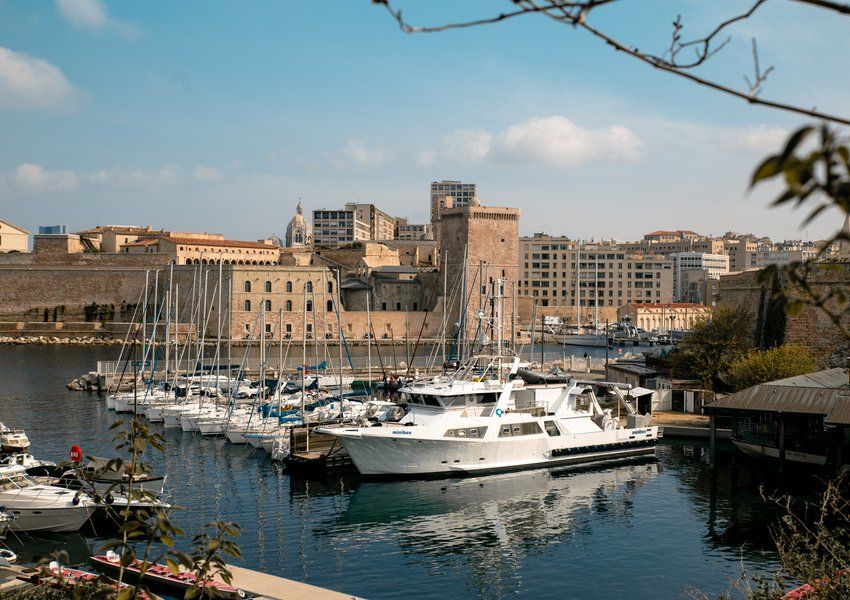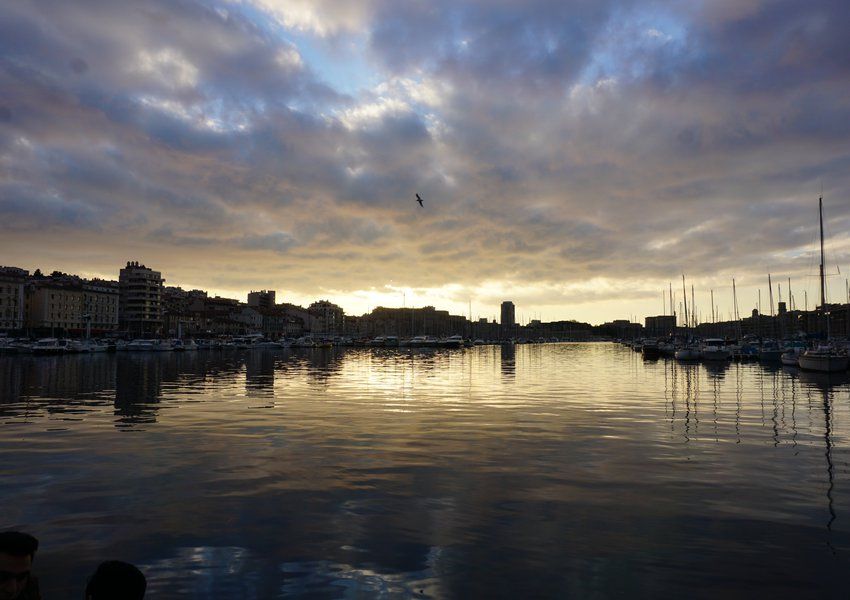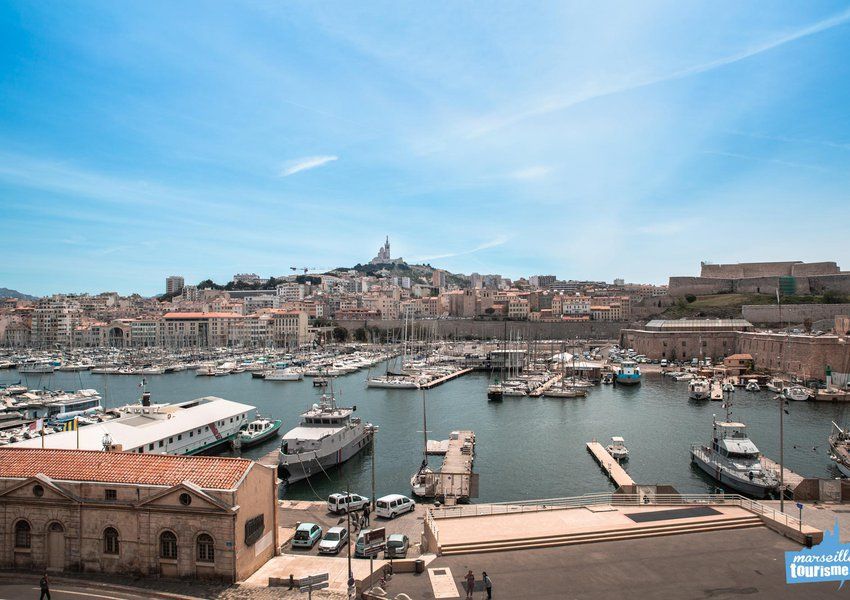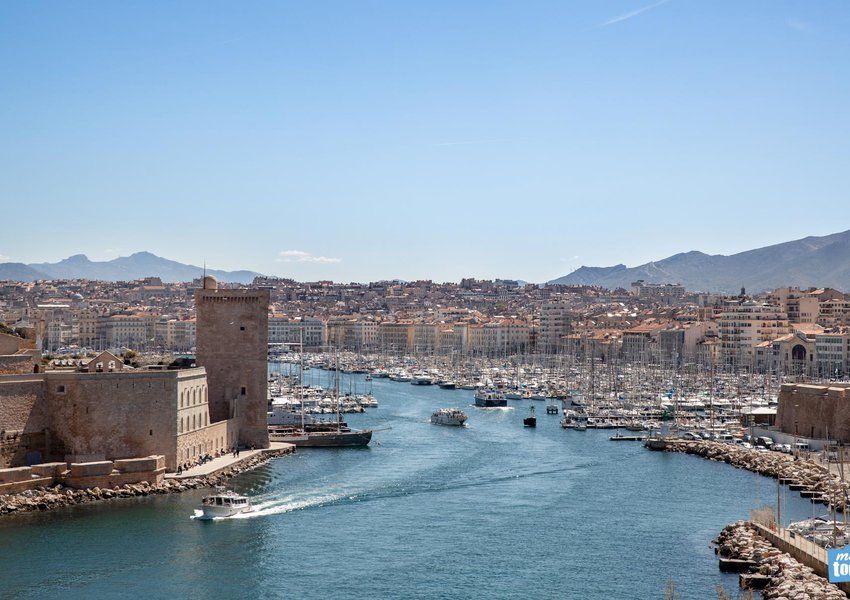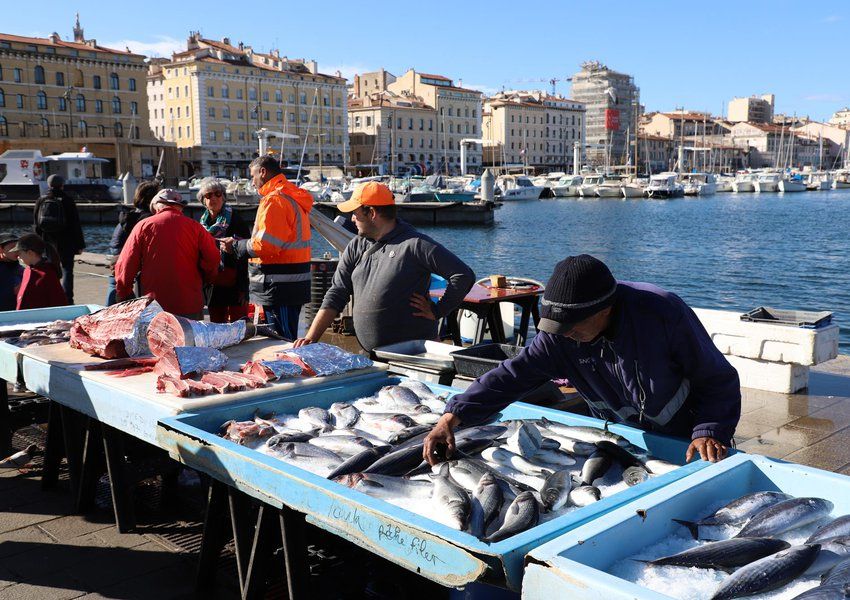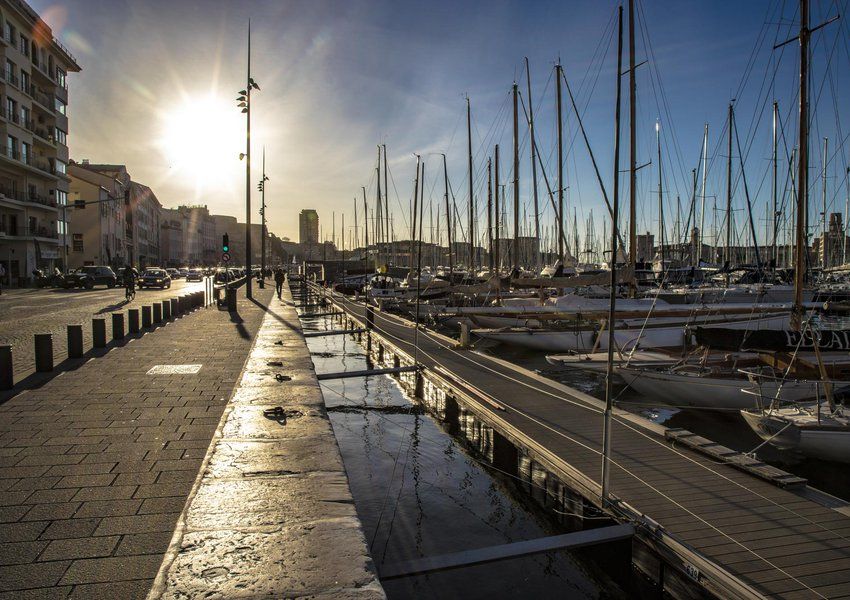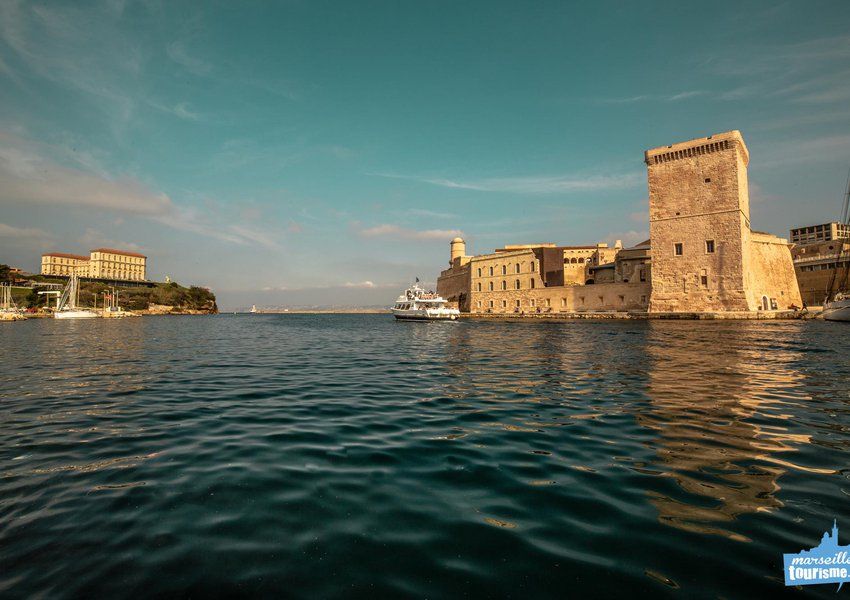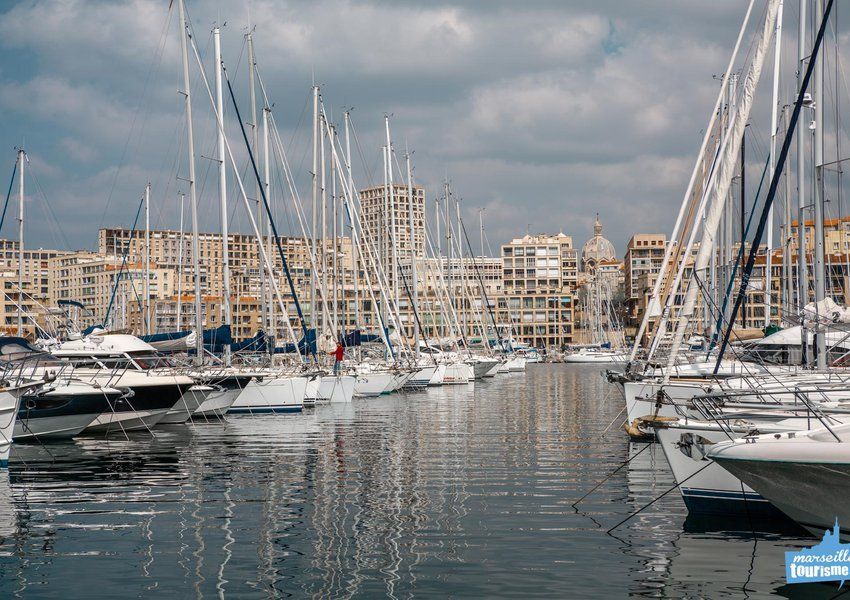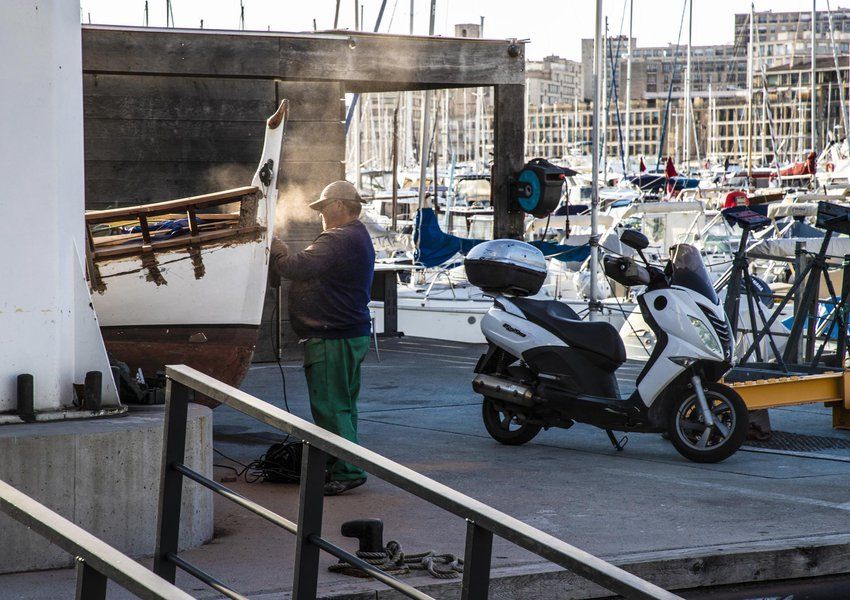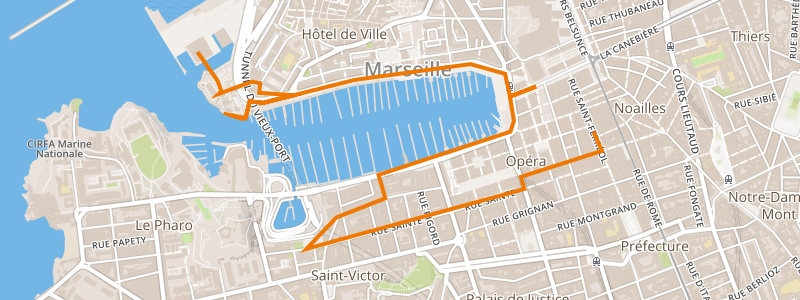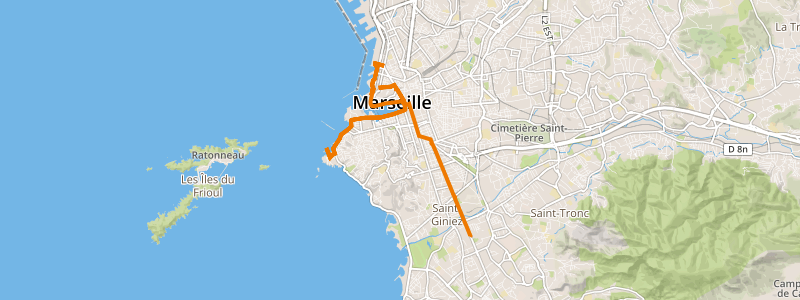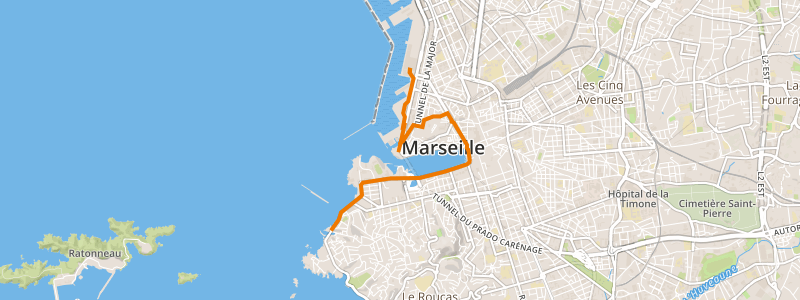The Old Port
It needs no introduction, it is there that according to legend, the History of Marseille began. Once called Lacydon, the Old Port is, as its name suggests, the oldest in the city, and the pulsating heart of the Phocaean City for centuries.
Today, it is one of the most emblematic places in Marseille. It is the natural meeting place for all Marseilles residents and visitors. This is where you can feel the atmosphere of Marseille, between the fish market and the excitement of the city centre. On the nights when the soccer team OM play, Marseille bars broadcast the match and fans come to celebrate the victories in the Old Port.
If you wish to visit Marseille, it is at the Vieux Port that you will find the ticket offices and the starting point for many excursions: if you are wondering what to do in Marseille, the Petit train de Marseille which will take you through the city to discover the tourist sites, you can visit the islands of Marseille and the calanques, rent a boat...
Many monuments of Marseille are nearby. Among the must-see attractions are Fort Saint Jean, the Church of Saint Ferréol les Augustins, the Cathedral of the Major...
You can also rent a segway to visit the city in a different way. Go ahead, it's not that complicated ;-) Otherwise, bike rental is also possible.
Finally, if all these excursions have whetted your appetite, you've come to the right place. This is where you will find the largest concentration of restaurants in Marseille!
But let's come back to the Old Port and its history...
Foundation of Massalia: The legend of Protis and Gyptis
Marseille and its port is twenty-six centuries of common history, because according to legend the city was born here on the shores of this marshy cove. An ideal port that protects from the sea and enemies, the Lacydon cove was adopted by the Greek settlers who created Massalia there. The site chosen from the sea reflects the concerns and logic of these sailors. Legend (which is still being debated today) tells us that Protis from Phocaeus in Greece founded the city around 600 BC. Aristotle in his "Constitution of Marseille" tells us about this legendary episode:
"The Phocaeans who founded Marseille were merchants from Ionia. One day, King Nannos - that was his name - welcomed Euxène de Phocée. However, on the very day of his arrival, Nannos celebrated his daughter's wedding. In fact, Euxène was invited to participate in the wedding banquet. The wedding was to take place as follows: after the meal, the girl would enter the ceremony room and offer a cup of wine mixed with the wine that would become her husband. When the girl entered, she gave the cup, either by chance or for a reason that is up to her, to Euxène. The girl's name was Petta. Once this was done, the father, believing that this offering corresponded to the divine will, consented to this union. Euxene therefore took Petta as his wife and lived with her, not without having changed her name to Aristoxene. There is still a family in Marseille that is descended from this woman: it is the Protiades, Protis being the son of Euxène and Aristoxéné. »
Justin, in his compendium of Philippine stories, reprises Aristotle by changing the names: Petta becomes Gyptis and Euxène is called Protis (the first). King Nunn's tribe is the Segobriges, a Celto-Ligurian people. Protis receives in dowry the cove on which he founded the city that would become Marseille. Temples are built in homage to Artemis and Poseidon, the other Greek sailors unite with local women. This is the beginning of the city state Massalia. The Gauls adopted the more advanced Greek culture. Marseille will remain for a long time like a little Greece in the middle of Barbarian Gaul.
A few years later, however, tensions broke out between the Ligurian Celtic tribes and the ever-increasing number of Greek settlers. From then on, the city will not stop living under their threat.
The Old Port in the heart of Marseille's history
The entrance to the Old Port was protected by a heavy chain stretched on each side at nightfall. It was swept away by the Spaniards during the attack and looting of the city in 1423. The famous chain is taken as a trophy and still sits in the Cathedral of Valencia.
The quays were built between the 15th and 17th centuries. At the end of the 16th century, the two oldest buildings in the city were built: the Hôtel de Cabre and the diamond house, which is a must see in Marseille! In 1666, Louis XVI ordered the extension of the city: the ramparts were demolished and the city could finally extend to all the shores of the port. Indeed, for centuries, Marseille was a large city within a very small space. The city, strangled by its ramparts, offered only a limited space and had become too narrow to contain its expansion.
Fort Saint Jean and Fort Saint Nicolas were created in the 18th century, offering a worthy protection to this strategic port. In 1719, the sanitary facilities in Friuli, in the islands of Marseille, were built to facilitate the quarantine of crews of ships from distant lands. Unfortunately, this ingenious device was not enough to counteract the terrible epidemic of black plague that struck the city shortly afterwards in 1720.
The Industrial Revolution and the end of the central role of the Old Port
However, the extension of the Old Port has long been planned and desired, but it has not materialized despite the many abundant projects in this direction. But, around 1840, the small port could no longer contain the maritime traffic that had become too intense. Having become the second largest port in France, Marseille has become an important national issue. It was the government that finally decided and ordered the construction of the new Joliette basin in 1844. To connect the new port to the old one, a new route was laid out: Rue Impériale, now known as Rue de la République.
In 1849, the waters of the Durance River arrived in the city. This was a major event in the history of Marseille, which was honoured by the construction of the Palais Longchamp in 1869. Thus began the industrial expansion of the Phocaean City. Canneries, oil mills, factories, soap factories, sugar refineries, flour mills are developing rapidly...
In 1845, the Gare Saint Charles was built on a hill, facilitating access to the city and the transport of goods. In 1848, the Promenade de la Corniche was created and omnibus and tramway services appeared. The question of transport is becoming crucial in this growing territory. The end of the 19th century saw the city's apogee. As an "international commercial port" and a "major passenger port", the port of Marseille is the connection with the colonies of North Africa and the Far East.
The sardine that blocked the Old Port
This expression, well known throughout France, symbolizes at the top the high verb of the people of Marseilles. This popular expression, which appeared in the 19th century, means "a story to be told", but remains nevertheless based on a true story.
It all began in 1779, in the midst of the war against the English. Agreements for the release of prisoners of war were concluded between the two enemy camps. The French prisoners released under the agreement embarked on the frigate "la Sartine" named after Louis XVI's Minister of the Navy. To avoid being sunk by the English ships that controlled the Mediterranean at the time, the ship was flying a white flag to ensure its integrity during the voyage. Unfortunately, in circumstances that were still unclear, the ship was struck by two rounds of cannons by the British fleet off Cape St. Vincent.
La Sartine's command was killed in this attack and the ship was seriously damaged. On May 17, 1780, the Sartine arrived in the harbour of Marseille. The imposing ship then ran aground at the entrance to the port, and because of the size of its hull and masts would temporarily paralyse the city's port activity.
The good mood and self-derision of the Marseilles people did the rest. History is now a symbol for the people of Marseille, who are always teasing with "foreigners", but also for the rest of France, who see it as the personification of the Marseilles people's exaggeration.
The Old Port today
Having lost its central economic dimension, the Old Port is becoming both a social and cultural centre of the city. The traditional fish market and its fishing boats preserve the image of a city facing the sea. The bars and restaurants on both sides of the river make it an essential place to stroll.
In 2012, the platforms will become semi-pedestrian for the event "Marseille, European Capital of Culture 2013". The transformation of the Old Port will be completely completed by 2020.
